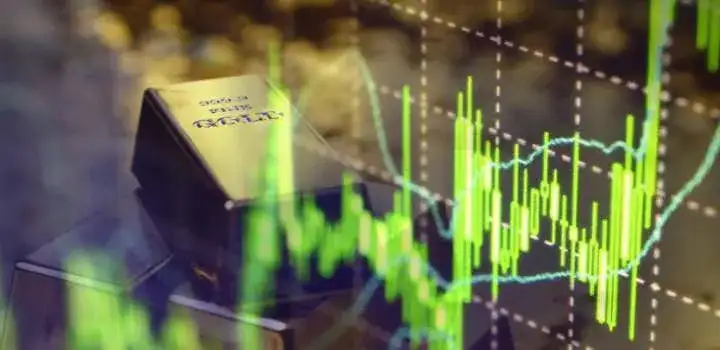
The world of precious metals investing can seem complex and daunting for newcomers, especially when you're introduced to concepts like the gold spot price. However, understanding the mechanics of gold spot price is vital for any investor in gold, whether they are a seasoned pro or a beginner.
What is the gold spot price?
The spot price of gold is the current market price at which one ounce of gold can be bought or sold for immediate delivery. In essence, it's the live, real-time price at which gold is trading over the counter, across global marketplaces. This price is determined by several factors including supply and demand, market sentiment, and economic data.
What affects the gold spot price?
On the supply side, gold spot prices can be influenced by gold mining activities, central bank reserves, and gold recycling. If mining companies increase production, or if central banks, which hold significant amounts of gold, decide to sell, the increased supply can push down spot prices. Conversely, if mining activities decline or central banks become net buyers of gold, the reduced supply could raise spot prices.
Demand factors include purchases made by jewelry manufacturers, investments in gold-based financial products, and buying by individual investors. As these parties buy more gold, demand increases, potentially raising the spot price.
Market sentiment refers to the overall attitude of investors toward a particular market. If investors are bullish about gold, demand may increase, pushing up the spot price. Conversely, if sentiment is bearish, demand may decrease, potentially lowering the spot price.
Economic data also has a substantial impact on gold spot prices. For example, when inflation rises, gold often becomes more appealing as a store of value, potentially driving up the spot price. Similarly, during times of economic instability or uncertainty, investors often flock to gold as a safe haven, which can also drive up the spot price.
Why is it important to understand gold spot price?
Understanding gold spot prices is critical when investing in gold because it helps you identify the optimal times to buy or sell. For instance, if you believe that gold prices are set to increase based on your analysis of supply and demand factors, market sentiment, and economic data, you might choose to buy gold. Conversely, if your analysis suggests that gold prices might fall, you might decide to sell.
It's also worth noting that when you buy physical gold, you'll usually pay a small premium above the spot price. This premium covers the costs of fabricating, distributing, and marketing the gold, as well as a small profit margin for the seller.
CONCLUSION
In conclusion, the gold spot price is a fundamental concept in gold investing that reflects the current market price for one ounce of gold. By understanding how it is determined and what factors influence it, you can make more informed decisions about when to buy or sell gold. Regardless of whether you're a seasoned investor or a novice, understanding the gold spot price can help you navigate the exciting world of gold investing with greater confidence.
Other Frequently Asked Questions (FAQs) About Spot Price
- Q: How is the spot price determined?
A: The spot price is influenced by various factors such as supply and demand dynamics, geopolitical events, economic indicators, and market sentiment. It's set by trading on commodity exchanges like the New York Mercantile Exchange (NYMEX) or the London Bullion Market Association (LBMA).
- Q: Does the spot price include taxes and fees?
A: No, the spot price is the base price of the metal itself and doesn't include taxes, shipping fees, dealer premiums, or other charges that may apply when purchasing or selling precious metals.
- Q: Why does the spot price change throughout the day?
A: The spot price is subject to constant fluctuations due to global trading activities occurring 24/7. Market events, economic news, and changes in investor sentiment can cause prices to change rapidly.
- Q: Is the spot price the same for all precious metals?
A: No, the spot price varies depending on the type of precious metal. Gold, silver, platinum, and palladium each have their own unique spot prices based on market demand and supply conditions for that specific metal.
- Q: How can I track the spot price of precious metals?
A: The spot price can be tracked through financial news websites, specialized precious metals market websites, commodity exchanges, and some precious metals dealer websites. Many financial news platforms also provide real-time spot price updates.
